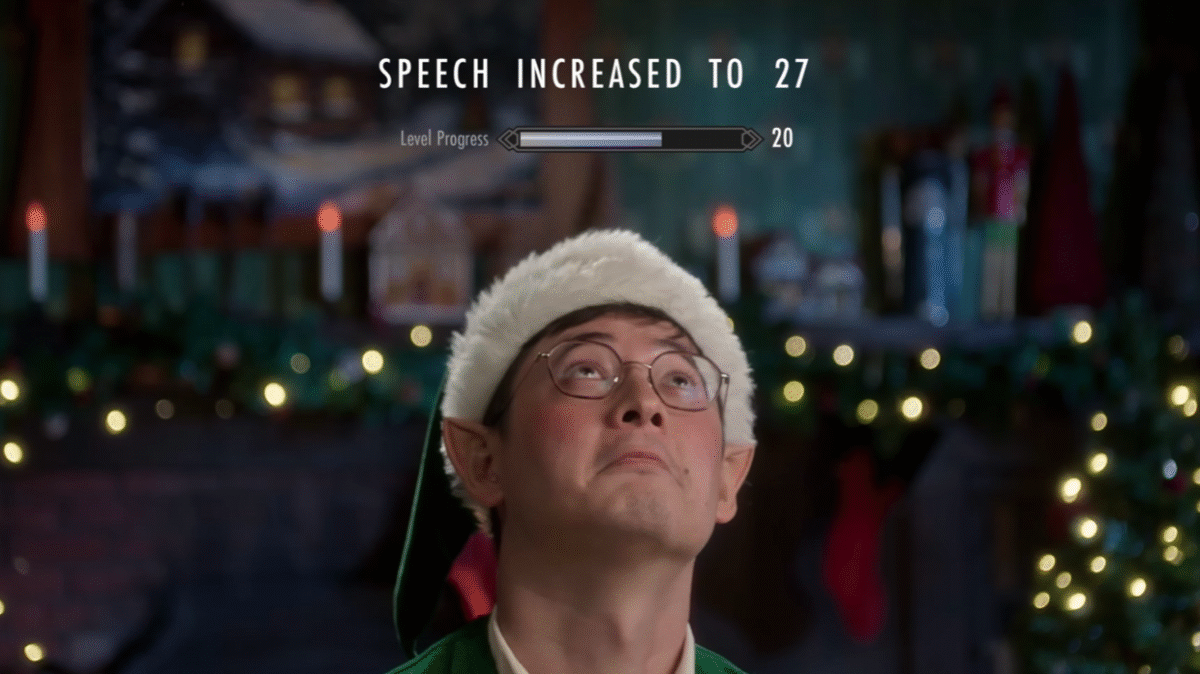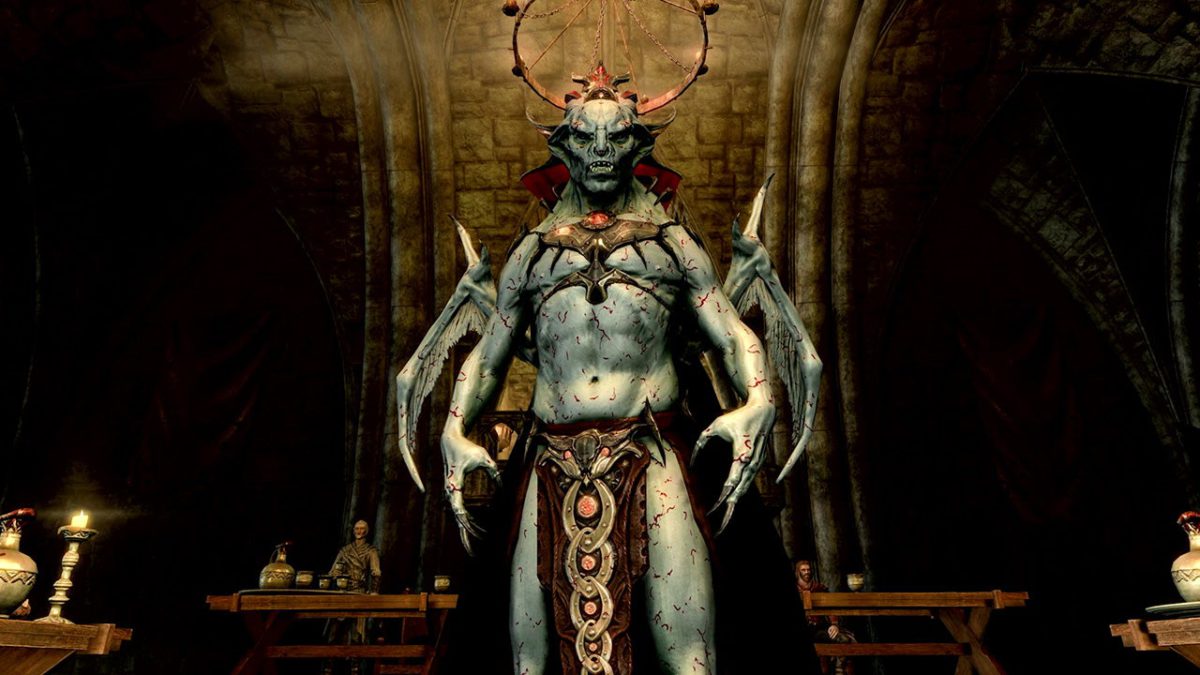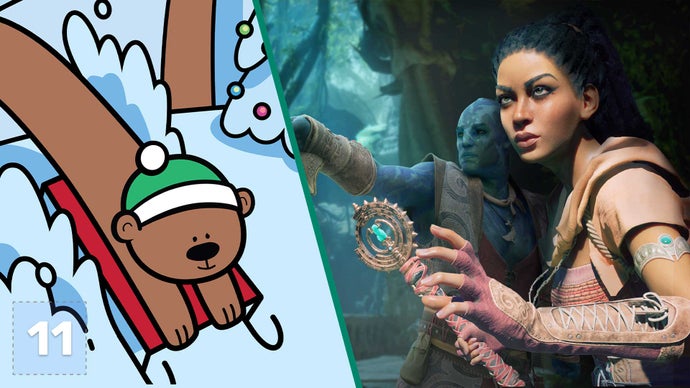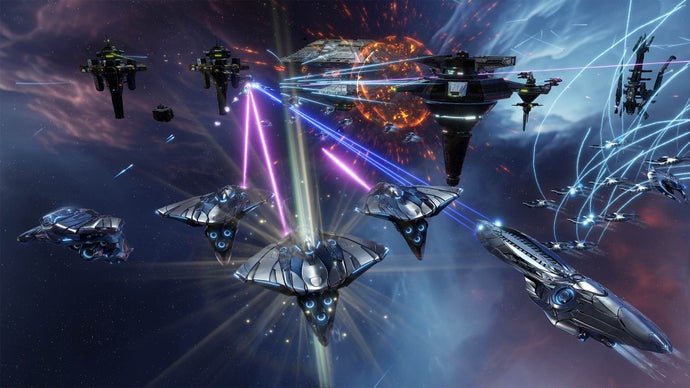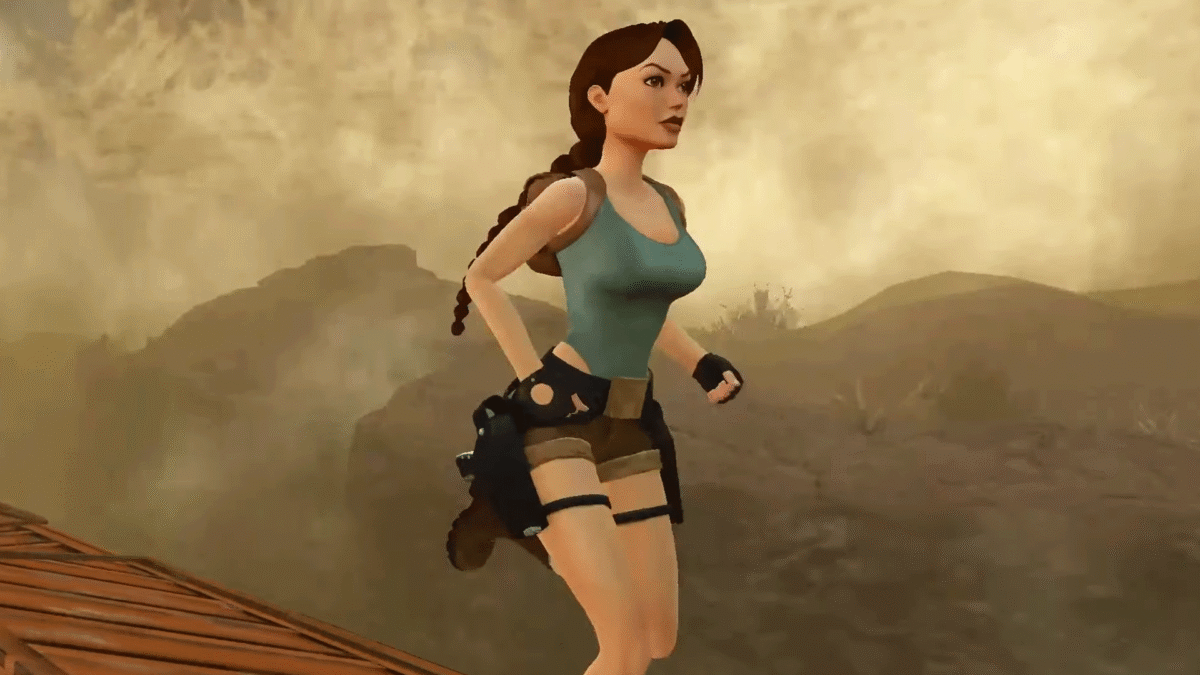
As the wait for The Elder Scrolls 6 goes on, some fans believe developer Bethesda teased its release year in a live-action Skyrim trailer.
Earlier this week, Bethesda shadow-dropped Skyrim on Nintendo Switch 2, and in doing so released a live-action comedy trailer that saw a bad Santa enlist the help of two of his elves.
The trailer, below, shows one of the elves raising their speech level to 27 after suggesting Skyrim launch on Switch 2, with their overall character level progress working towards 20. Why pick 20 and 27 specifically? Because The Elder Scrolls 6 is coming out in 2027, some fans are now saying.
“This honestly might be the best piece of evidence we have for a release date,” one fan said. “Those are very specific numbers and I don’t think they would use those numbers by accident.” “My god we’ve gotten so desperate,” countered another.
They are oddly specific numbers though, and you’d like to think Bethesda knew what it was doing by choosing them, rather than rolling the dice and coming up with random numbers. This is The Elder Scrolls 6 we’re talking about — it’s one of the most anticipated video games currently in development. Fans want — need! — to know when it’s coming out, and so anything like this was always going to set them off.
But is 2027 a likely release year? Last month, Bethesda chief Todd Howard said The Elder Scrolls 6 wouldn’t be out for some time yet despite being announced over seven years ago. In an interview with GQ magazine to celebrate the release of Fallout 4 Anniversary Edition, Howard said The Elder Scrolls 6 is “still a long way off.” He added: “I’m preaching patience. I don’t want fans to feel anxious.”
You can understand why patience might be difficult for some fans though. In January this year, The Elder Scrolls 6 announcement became as old as predecessor Skyrim was when The Elder Scrolls 6 was announced. Skyrim was released on November 11, 2011, and The Elder Scrolls 6 was revealed on June 10, 2018 — 2,403 days afterwards. It is now seven-and-a-half years since the announcement, and we’re no closer, it seems, to the release of the game.
When the six-year anniversary of The Elder Scrolls 6 announcement arrived in June last year, even Todd Howard paused to say, “oh wow, that has been a while.” The Elder Scrolls 6 is at least in production, with Bethesda confirming it had entered “early development” in August 2023 and “early builds” were available in March 2024.
In the GQ article, Howard once again admitted that it has taken too long to get The Elder Scrolls 6 out the door, but did tease a The Elder Scrolls 4: Oblivion Remastered-style shadowdrop — without confirming anything.
“I do like to have a break between them, where it isn’t like a ‘plus one’ sequel,” Howard said of making The Elder Scrolls games again. “I think it’s also good for an audience to have a break — The Elder Scrolls has been too long, let’s be clear. But we wanted to do something new with Starfield. We needed a creative reset.” Bethesda is currently playtesting The Elder Scrolls 6, Howard revealed.
“I like to just announce stuff and release it,” Howard continued. “My perfect version — and I’m not saying this is going to happen — is that it’s going to be a while and then, one day, the game will just appear.” The Oblivion Remastered shadowdrop was “a test run,” Howard teased. “It worked out well.”
As for what Bethesda has going on right now, hundreds of people are working on Fallout, Howard said, across Fallout 76 “and some other things we’re doing, but The Elder Scrolls 6 is the everyday thing.”
Earlier this year it was confirmed that The Elder Scrolls 6 will include a character designed in memory of a much-missed fan after a remarkable charity campaign that raised more than $85,000 for Make-A-Wish.
Wesley is Director, News at IGN. Find him on Twitter at @wyp100. You can reach Wesley at wesley_yinpoole@ign.com or confidentially at wyp100@proton.me.

